Best known as a member of Crosby, Stills and Nash (later, briefly, Crosby, Stills, Nash and Young) Graham Nash is also a photographer and photography collector. In 1990 he co-founded (with R. Mac Holbert) Nash Editions, the first major fine-art digital printmaking studio.
Music and photography he likes to conflate.
When I look at Ansel Adams’s print Moonrise Over Hernandez I can feel the basses and cellos in the shadows – I can hear the violins in the clouds. (via)
Ansel Adams. Nash is not afraid to buck the trends. The stately perfection of Adams, his pristine view of an immaculate natural world, parallels the harmonies of CSN. Both Adams and CSN are out of date but not discredited. They hold their place, ready to shine when the time is again right for their lucid reassurances.
As a photographer, Nash favors a refined Surrealism that showcases his technical prowess – more Jerry Uelsmann than Ralph Eugene Meatyard.
Nash, Self-Portrait at the Plaza Hotel, New York, New York 1974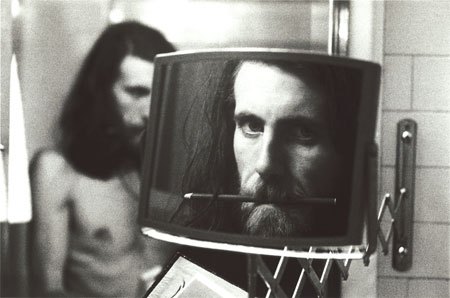 When he dispenses with the elaborate set up and just takes the shot, however, he can be convincing. His performance portraits are pure but not corny.
When he dispenses with the elaborate set up and just takes the shot, however, he can be convincing. His performance portraits are pure but not corny.
Nash, Taj Mahal at the Mariposa Folk Festival, Centre Island, Toronto, 1970
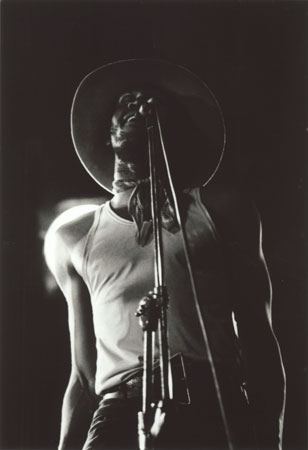 Nash also has the rare ability to look beyond his own practice, which is why he’s an excellent choice to curate a survey of rock ‘n’ roll photographs at the Experience Music Project in Seattle, titled, Taking Aim. There are 96 photos from 40 photographers. The vast majority are black and white, and the majority feature musicians from Nash’s era. (His view is wide but not unlimited.) All but a few were printed by Nash Editions, which means, they’re crisp.
Nash also has the rare ability to look beyond his own practice, which is why he’s an excellent choice to curate a survey of rock ‘n’ roll photographs at the Experience Music Project in Seattle, titled, Taking Aim. There are 96 photos from 40 photographers. The vast majority are black and white, and the majority feature musicians from Nash’s era. (His view is wide but not unlimited.) All but a few were printed by Nash Editions, which means, they’re crisp.
These photos track Nash’s story: where he started (looking up to Buddy Holly), his high points (when he knew everybody), and his appreciation of what came after (less of this). EMP says the show will travel. Great. Without knowing where, I can confidently predict it will look better there. As Frank Gehry carefully explained to the press at EMP’s opening, he designed the exterior only.
The inside is a techie-music-science fiction curio shop. Cluttered and cramped, it has one decent performance space but nothing that comes close to adequate for looking at art. Imagine an exhibit inside a Radio Shack with the batteries missing, and you’re there.
Other issues that might cause rancor: Not only are the 1960s overrepresented, so are white males, both in front of the camera and behind it.
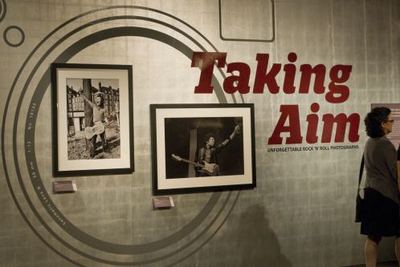 What this show has going for it is the veracity of its inclusions, from portraits to performance shots and casuals snapped when the artists were taking a break, letting off steam or presuming (wrongly) that they were alone. Some of the photographers rate in the art world (Nash, Annie Leibovitz, Richard Avedon, Charles Peterson, Alice Wheeler, Mick Rock and Dennis Hopper). Most are working stiffs, on the scene and elbows out. The shots they took are amazing.
What this show has going for it is the veracity of its inclusions, from portraits to performance shots and casuals snapped when the artists were taking a break, letting off steam or presuming (wrongly) that they were alone. Some of the photographers rate in the art world (Nash, Annie Leibovitz, Richard Avedon, Charles Peterson, Alice Wheeler, Mick Rock and Dennis Hopper). Most are working stiffs, on the scene and elbows out. The shots they took are amazing.
Barron Claiborne, Notorious B.I.G. New York, New York, 2003
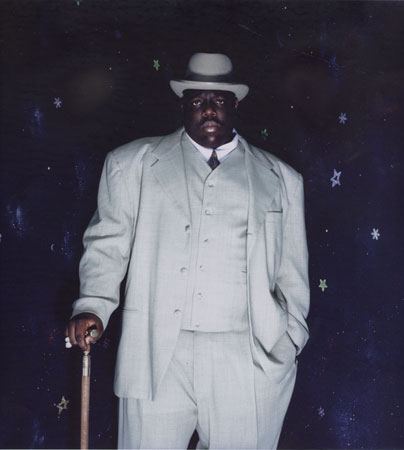 Barry Feinstein, Bob Dylan, 1966 Paris (He’s signing “God Bless” as Feinstein turned him into his own personal trinity.)
Barry Feinstein, Bob Dylan, 1966 Paris (He’s signing “God Bless” as Feinstein turned him into his own personal trinity.)
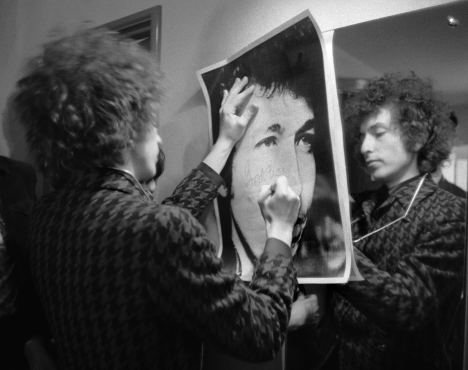 Two from Seattle:
Two from Seattle:
Alice Wheeler, Neko Case and Her Boyfriends, Tacoma, Washington, 2000
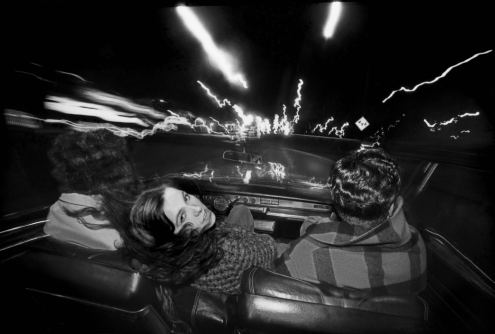 Charles Peterson, Crowd with body surfers during Mudhoney’s set at the KNDD Endfest, Kitsap County, Washington, 1991
Charles Peterson, Crowd with body surfers during Mudhoney’s set at the KNDD Endfest, Kitsap County, Washington, 1991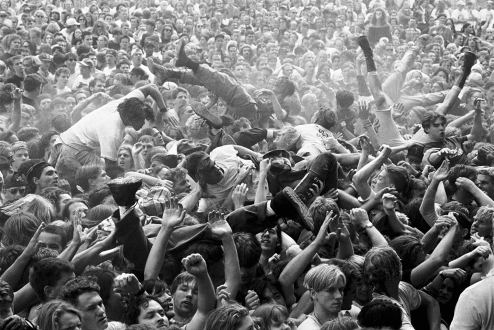 At EMP through May 23. The catalog is worth having.
At EMP through May 23. The catalog is worth having.



I agree that EMP is a less than ideal space for art, and/but this is a good show. Some images haunt, others tickle. Who can resist Elvis sitting down to a big plate of bacon and eggs? Or the young Pete Townsend at the top of his leap?